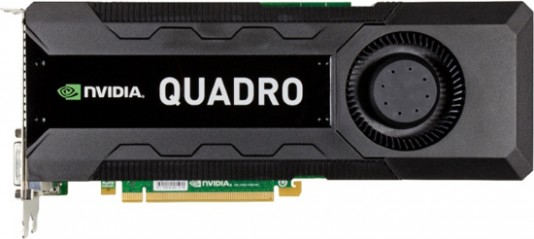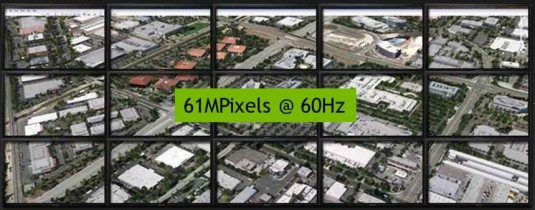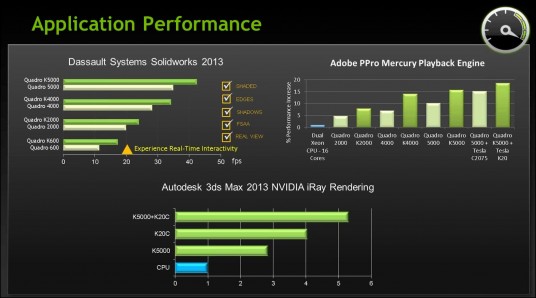The launch brings Kepler technology to the graphics card volume market for professional applications.
Nvidia is now shipping four new cards in its Quadro line of professional graphics cards. The new boards are all based on Nvidia’s Kepler architecture, already in use in high-end GPUs.

The new boards (with suggested retail prices in the US) are:
Quadro K4000: The new top-of-the-line Quadro, with 3 GB of onboard memory, multi-monitor support and stereo capability in a single-slot configuration. ($1,269)
Quadro K2000: A midrange card, with 2 GB of onboard memory. ($599)
Quadro K2000D: A variant of the Quadro K2000, with native support for two dual-link DVI display connectors for interfacing with ultra-high-resolution medical imaging displays. ($599)
Quadro K600: An entry-level card certified for a variety of professional applications. The K600 puts 1 GB of onboard on a low-profile design. ($199)
Nvidia says the goal for the cards was to provide higher performance while reducing power consumption. The power consumption of the Quadro K4000 running the previous generation Fermi technology was 420 Watts; in the Kepler edition of the K4000 electricity consumption has been reduced 80 Watts.
Features shared by the new cards include:
Next-generation streaming multiprocessor engine (SMX), delivering up to 50% faster visualization performance and twice the compute horsepower of previous-generation products.
Larger, faster onboard GPU memory to let designers and animators work with larger models and richer scenes while maintaining smooth interactivity during design, visualization and simulation.
Nvidia Mosaic technology for combining up to 16 displays as a single large display.

Image technologies Nvidia FXAA (fast approximate anti-aliasing) and Nvidia TXAA (temporal anti-aliasing) that deliver movie-style image quality and realism while maintaining a fully interactive experience compared to traditional approaches.
Support for up to four displays from a single card, enabling desktop workspace expansion and simplified deployment of display walls and immersive display environments; includes NVIEW desktop management software.
Compatible with second-generation Nvidia Maximus technology, which pairs the Quadro card with an Nvidia Tesla K20 GPU compute card.
Our take
Advances in professional graphics technology required the latest in supporting hardware. Manufacturing wants more up-front simulation; construction wants more detailed structural and environmental analysis during the early design phase; and media companies are straining to produce new high-definition 4K content, with rendering and production times that increase with the higher pixel counts. At the same time the electricity budget is becoming as important as the hardware budget. Nvidia seems to have taken on both issues simultaneously with this latest round of Quadro boards.






